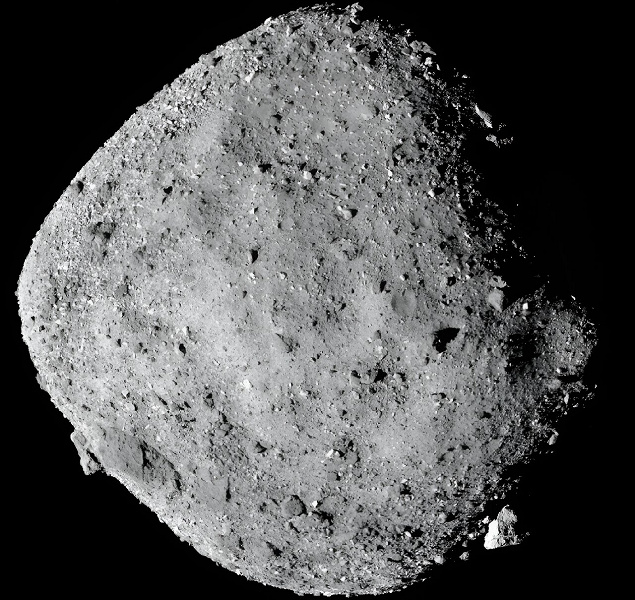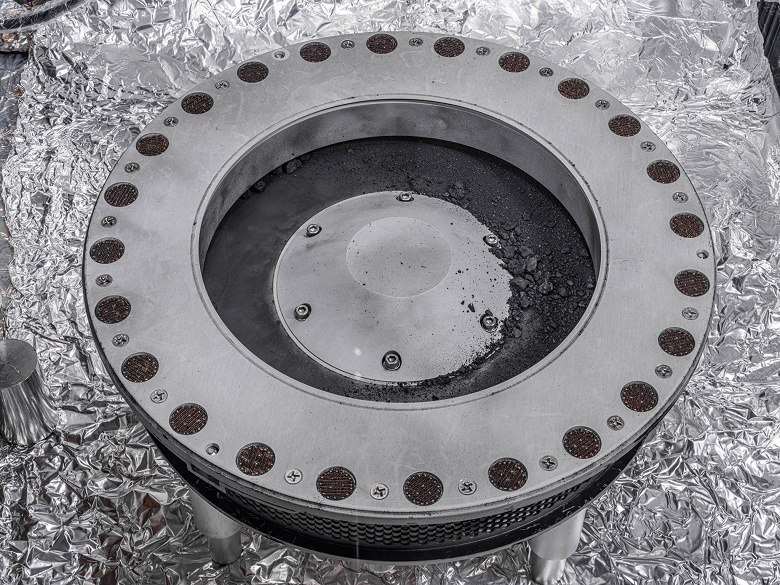Analysis of a sample collected from the 4.5-billion-year-old asteroid Bennu by the OSIRIS-REx mission showed the presence of abundant water and carbon, supporting the theory that life on Earth may have originated from space
Named after an ancient Egyptian deity, asteroid Bennu represents to scientists “a primordial artifact preserved in the vacuum of space,” making it an attractive target for scientific research. The asteroid’s intersecting orbit also makes it easier to launch missions to it compared to collecting samples from the asteroid belt located between Mars and Jupiter.
NASA said a sample collected from the asteroid Bennu contained abundant amounts of water and carbon, supporting the theory that life on Earth originated in outer space. This discovery was the result of a seven-year journey by the OSIRIS-REx spacecraft.

According to NASA Administrator Bill Nelson at a press conference at the Space Flight Center. Johnson in Houston, where the first images of black dust and pebbles were presented, carbon makes up almost 5% of the total mass of the sample and is present in both organic and mineral forms, and water is found within the crystalline structure of the clay minerals. The outer layer of Bennu is so loose that if a person stepped on the surface, he could fall through.
The OSIRIS-REx mission provides new data on Bennu – abundant water and carbon content on the asteroid
Conclusions about the composition of Bennu’s soil were made based on preliminary analysis using electron microscopy methods. “This is truly an astrobiologist’s dream,” said scientist Daniel Glavin, adding that there is still a lot of work ahead and that the sample will be shared with laboratories around the world for further study. The researchers are not yet focused on the main sample, but on those particles that lie at the top of the sample collection mechanism. The rest of the sample will be tested later.

Scientists believe that the reason Earth has oceans, lakes, and rivers is because it was subject to water-bearing asteroid impacts 4 to 4.5 billion years ago, which contributed to its habitability. At the same time, all life on Earth is based on carbon, which bonds with other elements to create proteins, enzymes, and the building blocks of the genetic code – DNA and RNA.
Scientific discoveries aside, a deeper understanding of Bennu’s composition could prove useful if humanity ever needs to divert its trajectory. While there is no risk of impact with Earth until the mid-21st century, the chances of an impact increase to about 1 in 1,750 between now and 2300, according to NASA.
When the OSIRIS-REx probe bombarded the asteroid with nitrogen to collect material in October 2020, a shutter designed to seal the sample became stuck open, allowing some material to escape into another compartment. “The best ‘problem’ is that there is too much material and it’s taking longer to collect than we expected,” said OSIRIS-REx deputy sample manager Christopher Snead.
NASA plans to preserve at least 70% of the sample in Houston for future research, a practice first begun with lunar samples during the Apollo era. The remaining samples will be sent for public display at the Smithsonian Institution, Space Flight Center in Houston, and the University of Arizona.




